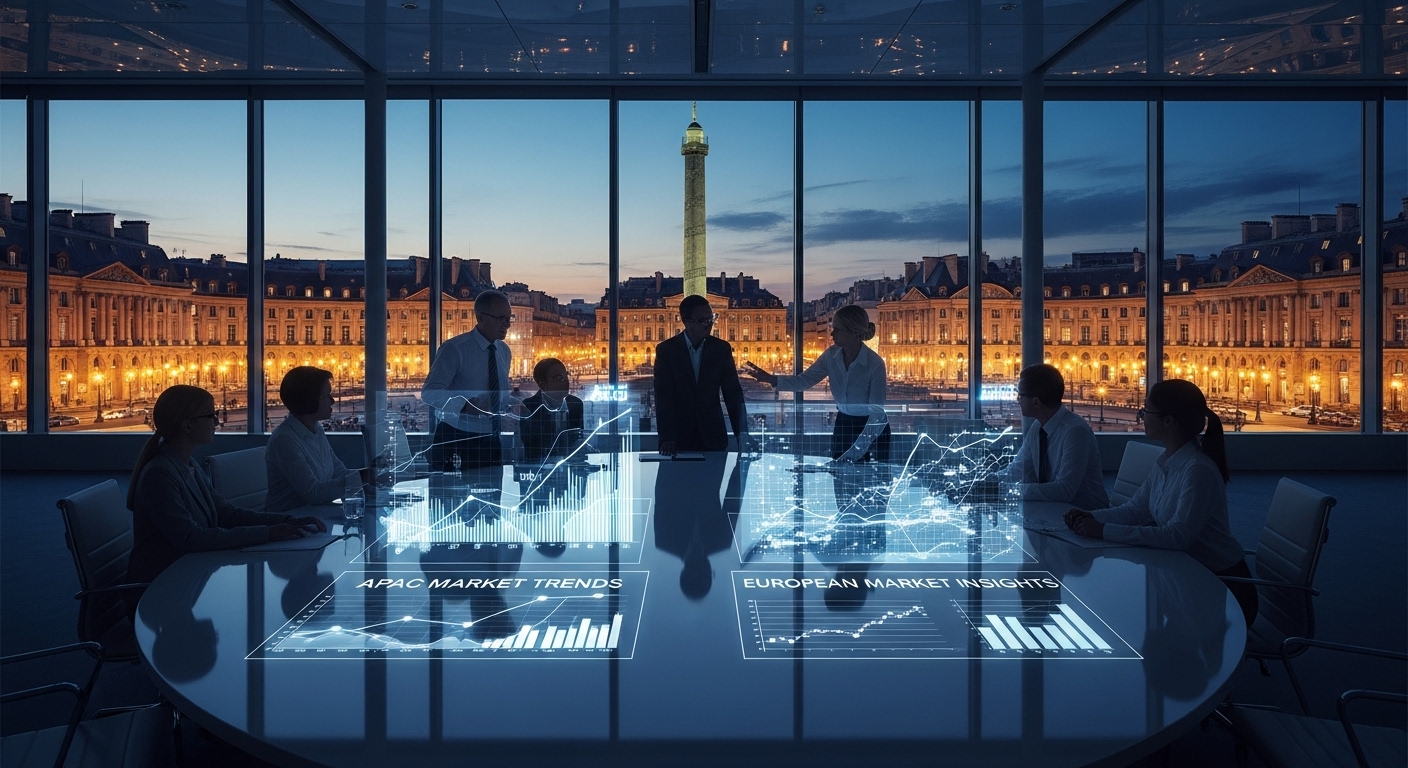In the wake of significant global shifts, from post-Brexit realignments to the digital acceleration spurred by the pandemic, Europe’s economic geography is more dynamic than ever. The continent’s business districts are at the heart of this transformation, acting as critical nodes for capital, talent, and innovation. While traditional powerhouses like London and Paris demonstrate remarkable resilience, a new class of challenger cities is rapidly carving out specialized niches, particularly in technology and sustainable enterprise. This creates a complex and fascinating nexus where legacy meets innovation. Understanding this evolving landscape is no longer just an academic exercise; it’s a strategic imperative for any business looking to invest, expand, or simply compete on the European stage. This analysis will navigate through Europe’s most vital commercial hubs, dissecting the strengths of established giants like London’s City, Paris’s La Défense, and Frankfurt’s Bankenviertel, while also spotlighting the agile challengers such as Dublin’s Silicon Docks and Amsterdam’s Zuidas. We will explore the factors driving their success and examine how the overarching theme of sustainability is reshaping the very blueprint of the modern business district.
London’s Twin Pillars: Resilience in The City and Canary Wharf
Despite persistent narratives of its decline following Brexit, London remains a formidable global financial center, anchored by its twin pillars: the historic City of London and the modern Canary Wharf. The City, with its centuries-old legacy, continues to be a hub for insurance, asset management, and complex financial services, supported by an unparalleled ecosystem of legal and professional firms. Its ability to adapt is its greatest strength. While some EU-facing banking operations have relocated, The City has pivoted with remarkable speed towards fintech and green finance, attracting billions in venture capital and positioning itself as a leader in sustainable investment. It leverages a deep, diverse talent pool and the inherent advantages of the English language and legal system to maintain its global appeal. Meanwhile, Canary Wharf, once solely the domain of investment banking, has successfully diversified its tenant base. It now hosts a growing number of tech companies, consultancies, and creative agencies, transforming it from a pure financial district into a more integrated urban center. Recent data from the Global Financial Centres Index consistently places London at or near the top globally, underscoring its enduring magnetism. This resilience is not accidental; it is the result of continuous reinvention and a strategic focus on high-growth sectors that will define the future of global commerce.
La Défense: Europe’s Purpose-Built Commercial Juggernaut
Stretching across the western edge of Paris, La Défense stands as a testament to ambitious urban planning and a clear symbol of continental Europe’s economic might. As the largest purpose-built business district in Europe, it boasts a staggering concentration of corporate headquarters, particularly for French and international firms in the energy, finance, and industrial sectors. In the post-Brexit landscape, La Défense has been a primary beneficiary of corporate relocations from the UK, solidifying its status as a key financial hub within the European Union. Its skyline, dominated by iconic skyscrapers, is not just a visual statement but a reflection of its economic density. However, the district’s evolution is ongoing. Recognizing the need to move beyond a purely 9-to-5 office environment, significant investments are being made to transform La Défense into a more vibrant, livable space. The extension of the RER E line and the Grand Paris Express project are enhancing its connectivity, while new residential towers, retail spaces, and green areas are being integrated to create a true mixed-use community. Real estate analysts frequently highlight its appeal.
As one CBRE report noted, “La Défense offers a compelling combination of scale, modern office stock, and unparalleled public transport infrastructure, making it a default choice for large corporates seeking a strategic presence in the Eurozone.”
This blend of established power and forward-thinking urban renewal ensures that La Défense will remain a critical node in the European business network for decades to come.
Frankfurt’s Bankenviertel: The Anchor of the Eurozone
Often referred to as ‘Mainhattan’ for its concentration of high-rise buildings along the River Main, Frankfurt’s Bankenviertel is the undisputed financial heart of Germany and, arguably, the entire Eurozone. Its strategic importance is cemented by the presence of the European Central Bank (ECB) and the Deutsche Bundesbank, which act as powerful anchors for the entire financial ecosystem. Unlike the sprawling districts of London or Paris, Frankfurt’s business center is remarkably compact, allowing for easy collaboration and a strong sense of community among its financial and legal professionals. This density fosters an efficient business environment where decision-makers are just a short walk away. While traditionally focused on banking and capital markets, the Bankenviertel has strategically expanded its capabilities to support the digital transformation of finance. The city has become one of the world’s most important internet exchange points, DE-CIX, attracting a massive cluster of data centers. This robust digital backbone is crucial for supporting modern financial services, from high-frequency trading to cloud-based banking platforms. Frankfurt’s stability, combined with its world-class infrastructure and central location within Europe, makes it a safe harbor for international banks and financial institutions seeking a secure and well-regulated base within the EU, ensuring its continued relevance as the Eurozone’s primary financial anchor.
Dublin’s Silicon Docks: The Transatlantic Tech Gateway
The transformation of Dublin’s docklands from a post-industrial landscape into a gleaming global tech hub is one of Europe’s most compelling economic success stories. Coined ‘Silicon Docks,’ this area is the European headquarters for a who’s who of tech giants, including Google, Meta, LinkedIn, and Stripe. Its rise was fueled by a strategic combination of a low corporate tax rate, a young, educated, English-speaking workforce, and, crucially, unfettered access to the European single market. This has positioned Dublin as the default transatlantic gateway for U.S. tech firms looking to establish a European presence. The concentration of major players has created a powerful network effect, spawning a vibrant ecosystem of startups, venture capital firms, and specialized service providers that buzz with ambition and innovation. However, this rapid growth has not been without its challenges. The influx of high-paid tech workers has put immense pressure on Dublin’s housing market and public infrastructure, creating significant social and logistical hurdles. Despite these growing pains, the momentum remains strong. The Irish government and private sector continue to invest heavily in education and infrastructure to support the tech industry’s growth, recognizing it as a cornerstone of the national economy. Silicon Docks serves as a powerful example of how a challenger city can leverage specific policy and demographic advantages to build a world-class industry cluster from the ground up.
Amsterdam’s Zuidas: The Model of Smart, Connected Urbanism
Amsterdam’s Zuidas district represents a new paradigm in business district development, one where connectivity, work-life balance, and sustainability are valued as highly as commercial density. Strategically located between Schiphol Airport and the city center, Zuidas boasts some of the best transportation links in Europe, making it exceptionally accessible for both international and local commuters. This connectivity has attracted a diverse and prestigious tenant base, ranging from top-tier law firms and financial institutions to cutting-edge tech and creative companies. Unlike more monolithic business districts, Zuidas was designed from the outset as a mixed-use neighborhood. High-end residential buildings, world-class restaurants, cafes, and cultural institutions are seamlessly integrated with state-of-the-art office towers. This focus on creating a complete, 24/7 community directly addresses the growing demand from top talent for a better work-life balance and a higher quality of urban living. Furthermore, Zuidas is a pioneer in sustainable urbanism, with some of the highest concentrations of BREEAM-certified buildings in Europe. Its development plan actively promotes green spaces, cycling infrastructure, and energy-efficient buildings, aligning corporate presence with strong ESG (Environmental, Social, and Governance) values. This holistic approach makes Zuidas more than just a place to work; it’s a model for the future of European business districts, where economic productivity is intrinsically linked to human well-being and environmental responsibility.
The Green Imperative: How Sustainability is Reshaping Business Districts
Across Europe, a powerful green imperative is fundamentally reshaping the development and operation of business districts. The push for sustainability has evolved from a niche concern into a core strategic driver for corporations and real estate investors alike. Driven by regulatory pressure, investor demand, and a war for talent that increasingly prioritizes corporate values, Environmental, Social, and Governance (ESG) criteria are now central to every major real estate decision. In legacy districts like London and Paris, this has sparked a wave of ambitious retrofitting projects, where older buildings are being updated with energy-efficient systems and smart technologies to reduce their carbon footprint. For newer districts like Amsterdam’s Zuidas, sustainability is baked into their DNA, with stringent requirements for green building certifications like BREEAM or LEED becoming the norm.
According to a JLL report on European real estate trends, “Prime office locations with strong sustainability credentials command significant rental premiums and exhibit lower vacancy rates, as occupiers are willing to pay for spaces that align with their corporate ESG goals.”
This trend extends beyond the buildings themselves to encompass the entire district ecosystem, including access to public transport, cycling infrastructure, green spaces, and biodiversity initiatives. For companies, choosing a location in a sustainable district is no longer just about compliance; it’s a powerful statement of brand identity and a critical tool for attracting and retaining a workforce that expects their employer to be a responsible global citizen.
Conclusion
The landscape of European business districts is a vibrant tapestry woven from threads of enduring legacy and disruptive innovation. The traditional titans—London, Paris, and Frankfurt—are not fading but are actively reinventing themselves, leveraging their deep-rooted strengths in finance, law, and regulation while pivoting towards the high-growth sectors of fintech and green enterprise. Their resilience demonstrates a remarkable capacity for adaptation in the face of profound geopolitical and economic shifts. Simultaneously, a dynamic cohort of challenger hubs, led by tech-centric Dublin and the smartly designed Zuidas in Amsterdam, showcases the power of strategic specialization and a focus on quality of life. These cities prove that a compelling value proposition, whether based on tax policy, connectivity, or a commitment to sustainability, can create powerful new centers of gravity for talent and capital. For corporations charting their course in Europe, the key takeaway is that the choice of location is more strategic than ever. It’s not simply a question of ‘old’ versus ‘new,’ but of understanding the unique ecosystem each district offers. The ultimate decision must align with a company’s specific goals, its industry focus, its culture, and, increasingly, its commitment to sustainability. Navigating this complex nexus successfully is the hallmark of a truly forward-thinking and resilient global business.





